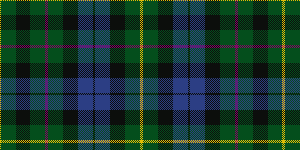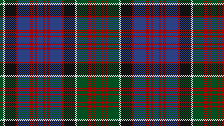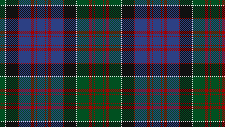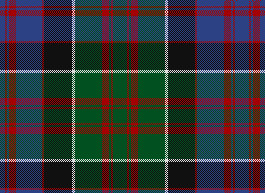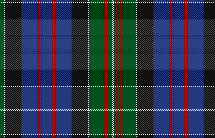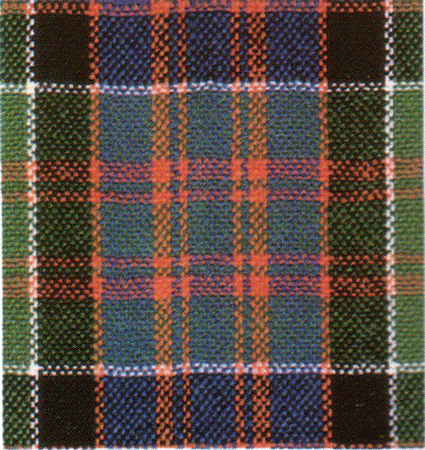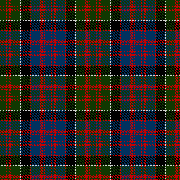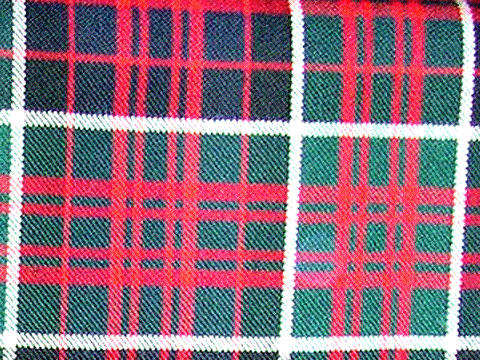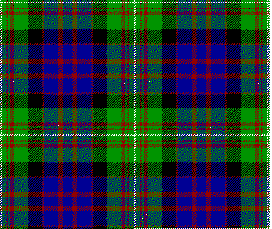General Information about Clans, Tartans and Kilts
Tartans
According to Scottish Clans and Tartans at HeartOScotland.com; "Today, there are around 2800 tartans listed in the Scottish Heritage World
Register - including ones for football clubs, individual towns, etc."
The numbers above refer to the registration numbers in the Scottish Tartans World Register.
There are 39 MacDonald Tartans listed in the World Register. The book "Clan MacDonald - Your Clan Heritage" shows 6 (including ClanRanald) show on the MacDonald tartan page here.
Most of the tartans were designed in the early 19th century, after the ban on
tartans following the loss at the battle of Culloden in 1746 was lifted.
Eight Different Types of Tartans:
* Chief's Dress Sett...worn by the chief and members of his/her family.
* The Clan Tartan...worn by members of the clan.
* The Hunting Tartan...Fall colours worn by members of the clan
* Mourning Setts...self explanatory.
* District Setts...regional, worn by anyone in that region.
* The Womens Sett...usually black and white colours.
* The Royal Sett...The Royal Stewart, a tartan which can be worn by anyone.
From www.infokey.com/hon/tartans.htm
The Clan
Definition of the word 'Clan' The Gaelic word for children is more accurately translated as 'family' in the sense in which the word clan became accepted in the Scottish Highlands during the 13th century. A clan is a social group whose core comprises a number of families derived from, or accepted as being derived from, a common ancestor. Almost without exception, that core is accompanied by a further number of dependent and associated families who have either sought the protection of the clan at some point in history or have been tenants or vassals of its chief. That chief is owed allegiance by all members of the clan, but ancient tradition nevertheless states that 'the Clan is above the Chief'. Although Gaelic has been supplanted by English in the Lowlands of Scotland for nearly a thousand years, it is an acceptable convention to refer to the great Lowland families, like the Douglases, as clans, although the heads of certain families, such as Bruce, prefer not to use the term. Allegiance was generally given to a father's clan, but Celtic tradition includes a strong element of descent through, and loyalty to, a mother's line. In reality, the chief of a clan would 'ingather' any stranger, of whatever family, who possessed suitable skills, maintained his allegiance and, if required, adopted the clan surname.
The Sept
A Sept is a family name which can be related to a clan or larger family for various reasons: Either through marriage or by seeking protection from a larger and more powerful neighbouring clan or family. Many names which are recorded as septs have since become clans in their own right and many can be related to more than one clan.
Kilt
After the battle of Culloden in 1746, traditional Highland Dress was banned along with the tartan from 1746-82. However Highland regiments were being formed in the Government army and most of these adopted the kilt and a tartan as part of their uniform. From this martial background comes the style of today's Highland Dress.
When George IV visited Edinburgh in 1822, Full Highland Dress was worn by almost everybody including King George himself thanks to the efforts of Sir Walter Scott. The kilt became quite definitely the distinctive national dress of Scotland.
A kilt requires 6-8 yards of 10 - 16 oz. fabric at $30-35/yd. or 4 yards of double width material at $65/yd.
See Also:
kilts
Tartan History
Return to the McBride Page.
|  McBride
McBride
 MacBride & MacDonald ClanRanald Tartans
MacBride & MacDonald ClanRanald Tartans
